Ps Art History Brush Is Meant to Do Impressionist Painting
Impressionism would accept been incommunicable if non these five inventions
The Impressionists were long-lived — a unique generation that lived to 70−80 years and was defenseless up in the vortex of nifty events and changes. The revolution, two wars, a outburst of new technologies and simple everyday conveniences that changed the earth forever.

They were born before photography was invented. If you wanted a portrait of a beloved wife or children, you had to committee an artist. In lodge to decorate the walls of an inn or store with a landscape or nonetheless life, you lot had to committee an artist. Women were still not allowed to study fine arts in schoolhouse or draw models without damaging their reputation. This was the world in the mid-19th century.
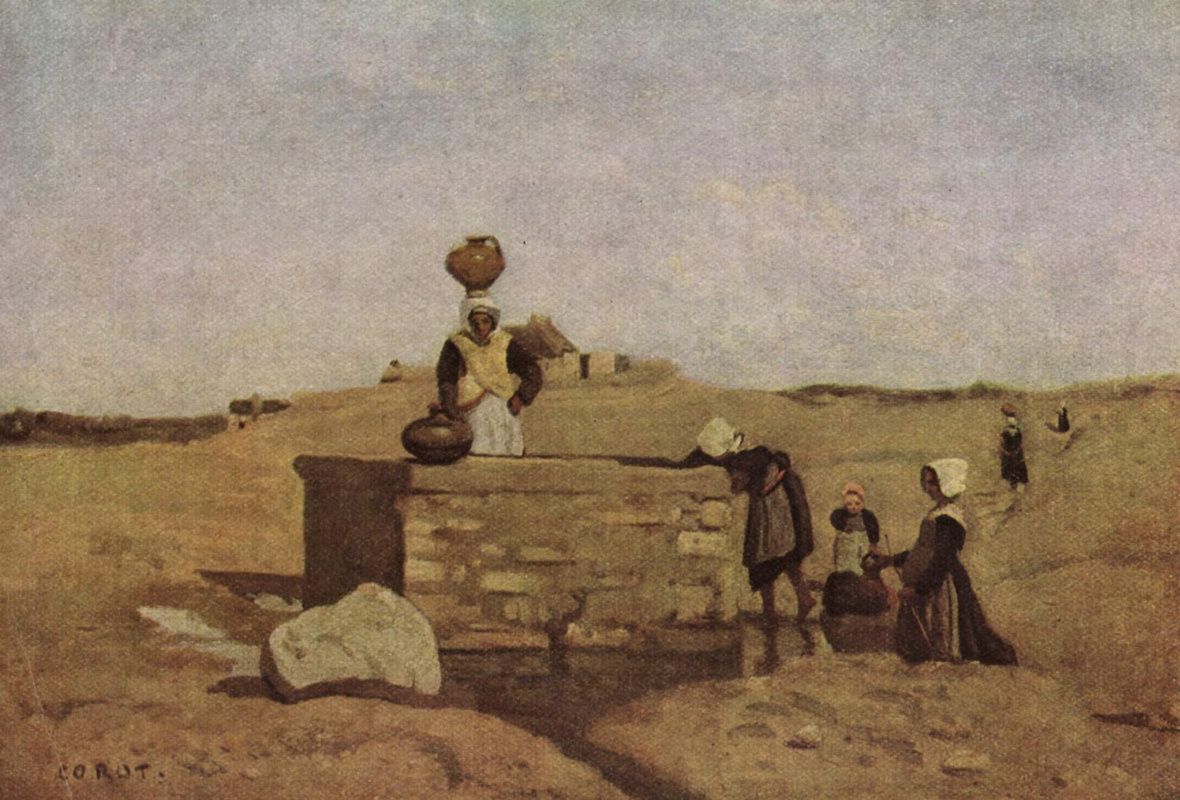
-
Eugène Delacroix. A Corner of the Studio. 1830
-
Paul Charles Chocarne-Moreau. Opportunity Makes the Thief
Jean, the son of Auguste Renoir, in his memoir of his father portrayed an unsurpassed paradigm of Paris, and at the same time all of French republic, as it was in the mid-1840s:
"Paris had i,200,000 residents: they used oil lamps for lighting; a water cart delivered water for drinking and washing; poorer people went to a well. They used woods-burning fireplaces for heating. Youngsters from the Auvergne cleaned the pipes: they climbed into a pipe, wearing stove pipe hats on their heads and a clothesline tucked under their armpits. After they put out the fire, they passed buckets of water to one another in a concatenation. There were no drain pits, considering there was no sewage organization. Chamber pots remained firmly in daily use. They grew vegetables in garden patches behind their houses or bought them from a neighbor'due south garden. Wine was sold in jugs, because bottles were considered a luxury; youngsters working at drinking glass factories blew them, and many of these immature people died of consumption; no two bottles were the aforementioned size. There were no popular sports. The poor played ball and ran later on girls, while the rich rode. Locks, carriage springs, tools and stair railings were forged past paw. Craftsmen lived in rooms to a higher place the workshop: no one made long trips past subway to get to piece of work."
Past the time Camille Pissarro was planning a trip from Paris to the Lesser Antilles, and Auguste Renoir painted portraits of Marie Antoinette on plates; by the time Claude Monet was drawing caricatures of his neighbors, and Berthe Morisot was copying old masters in the Louvre under her mother's supervision, the erstwhile globe was already in tatters. Rapid advances in science and applied science had several changes in store for the future clan of rejected artists, without which would have been impossible.
The paint tube
Today, all kinds of products, such as toothpaste, makeup, paints and even food for astronauts, are packaged in aluminum tubes. Merely this invention is only a bit more than 150 years onetime. For example, Claude Monet and Auguste Renoir were born in 1840, but it was only in 1841 that American John Rand patented his invention — a tin tube that rolled upwards at one terminate and closed with a screw cap at the other. At first, these tubes were incredibly expensive, only then they started existence made from atomic number 82 and became extremely dangerous. More than than a decade passed before the get-go aluminum tubes appeared, but artists weren't the least fleck concerned about either price or toxic properties, considering they had a real treasure in their hands.

There is nothing revolutionary in the paintings of Berthe Morisot: children, flowers, and tranquillity family concerns and amusements. Only that'due south only our stance tempered past modern fine art. In her time, the artist awed passersby by painting outdoors together with male person artists and applying paints with bold, deep strokes.
-
Берта Моризо. Соломенный стул
-
Берта Моризо. Гавань в Порту Фекан
Before the invention of the paint tube, artists stored their ready mixed paints in pigs' bladders tied with a string. And so they pricked the bladder with a tack in order to squeeze a bit of paint onto the palette, and plugged the pigsty with a stud. The actual pigment wasn't available in a bladder. To make it, apprentices hired for this purpose ground earth pigments with a stone on a stone slab; or in very civilized parts of the earth, ready fabricated powder was purchased in art shops. In this case, the artist knew exactly who had worked and how long to grind this powder for him.
Paint tubes not merely freed a painter from hard physical labor but likewise allowed him to behave paints with him wherever he wanted. Paint tubes made painting outdoors possible.
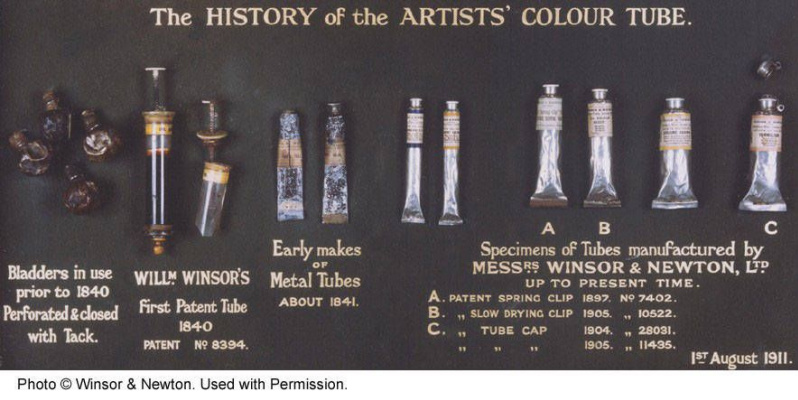
The evolution of the paint container. Glass syringes were an intermediate version between bladders and metal tubes, but they were not used very long or actively, considering they broke.
The folding easel
Information technology is not known for certain who was the first to carry an easel out to fields and woods. However, this invention was probably the virtually essential one later on portable paints. Before artists were hoisted up cliffs in a higher place the sea or pulled in biting cold to draw water ice floes on a river, their predecessors preferred a warm studio, so they had no need to conduct an easel with them from place to place.
And if this crazy idea occurred to anyone, several potent assistants would exist needed — moving a studio easel, permit alone conveying it exterior in search of the right subject, was utterly unrealistic. The new easel folded up into a small-scale handbag and was carried every bit mitt baggage on a train or boat, or in a compression in an handcart, to the closest field or lake.
-
Эдуар Мане. Моне и госпожа Моне в лодке.1874
-
Джон Сингер Сарджент. Клод Моне на пленэре.1885
As the iconic Impressionist, Claude Monet not just perfected the fine art of outdoor painting, invented and built a floating gunkhole studio, only too became the subject of many his friends' outdoor artworks.
Claude Monet used a handcart to motility his fine art equipment, just he most probable needed this simple send to move his canvases. The paints were already packed in a small folding pocketbook. But for each outdoor trip, Monet carried several dozen canvases — 1 for each time of day. Every bit soon equally the low-cal changed a piddling, he rummaged though his sketches from the showtime of the twenty-four hours or the week earlier to observe the matching 1 (for details, run across the clarification of the Poplars series of paintings).
Sus scrofa bristle brushes and the ferrule
When new materials give rise to new techniques, sooner or later, new images and ideas follow them. In the mid-19th century, artists were literally deluged with innovations and the latest developments, like paints, easels, and brushes, of course.
Soft, springy sable-pilus brushes allowed the former masters to create a polish, glossy surface on a canvas. On many old paintings, information technology'south nearly incommunicable to run into the transition from one tint to the side by side. When strong hog bristles started being used for brushes in the 19th century, artists wanted to leave a visible trace of this assuming tool, carve up brushstrokes and apply them liberally and daringly, emphasize the motion path of the hand, and even involve it in the overall flow of the artwork.
Along with new bristles, brushes underwent another tremendous upgrade in the mid-19th century. A metallic ferrule appeared on brushes instead of a string. This meant that for the first time, artists had apartment brushes. Not a circular sable-hair brush, but a flat one fabricated of pig bristles. Brushstrokes were at present much more emphatic, and became a new method of representing variability, move, or a momentary impression: using them made it possible to capture ripples on the water, sunlight flickering through leaves or the outline of a urban center dissolved in fog easily and assuredly. Working with a flat brush was difficult at starting time, merely very fast. It was an incredible advantage for an artist trying to capture something elusive.
-
Elisabeth Vigée Le Brun Self Portrait with Palette, 1790. Here, the brushes are bound with cord.
-
Vincent van Gogh Self Portrait in Forepart of Easel, 1887-88. The artist is holding brushes clamped with a metal ferrule.
-
The palette and brushes of John Singer Sargent.
-
The palette and brushes of Pierre Auguste Renoir.
Photography
In 1839, Louis Daguerre succeeded in making the first photographic image of a person; and the first Impressionist exhibition was held in 1874 at the photographer Nadar's studio. Photography speedily became a stylish new art class that changed the status of painting forever.
However, the Impressionists were absorbed by 1 power of this art: the ability to capture a moment of life and movement.
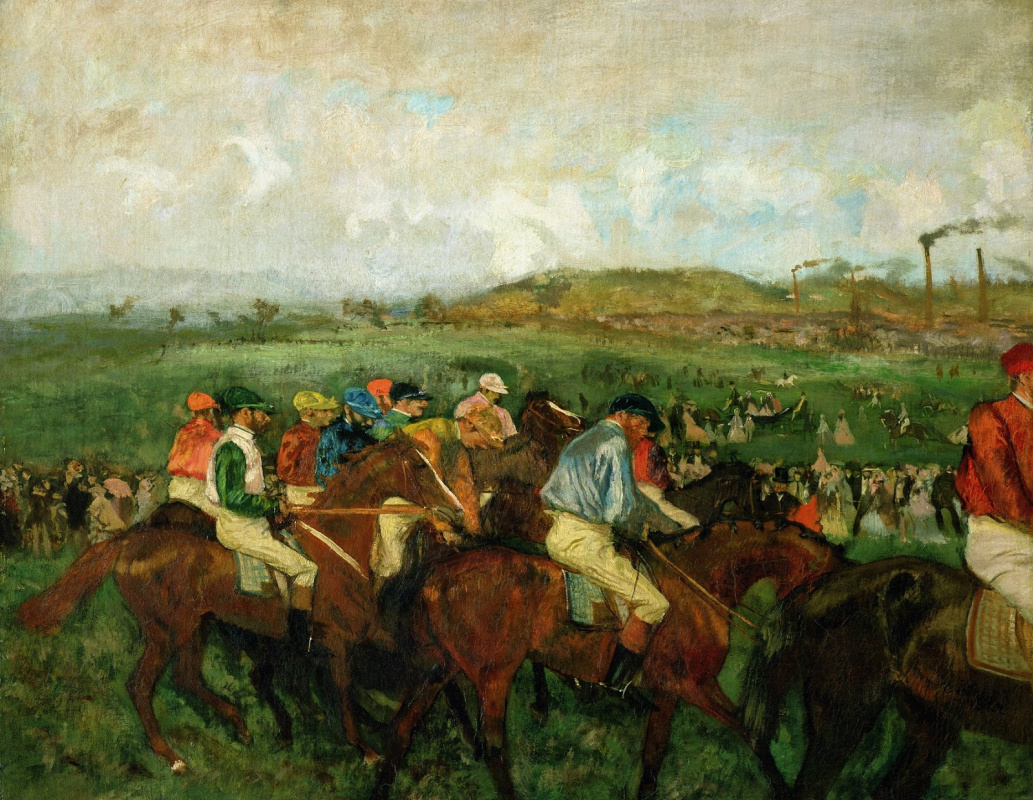
The exactness of the limerick captivated Renoir and Degas more than anything else. They boldly cropped figures on the edges, and Degas allowed simply a piece of the dress of an unseen ballerina or horse's crupper to poke into the infinite of a painting. His ballerinas fidget, tie their ballet slippers, or only feel bored, as if they accidentally concluded up in the shot.
-
Edgar Degas. Three Dancers in an Exercise Hall, 1873
-
Auguste Renoir. The Umbrellas, 1886
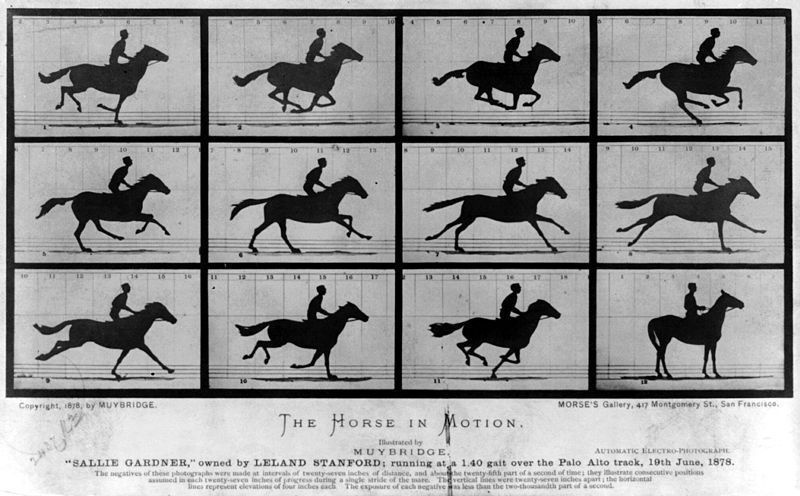
Edgar Degas bought the volume Animals in Movement by the American photographer Eadweard Muybridge every bit soon as it was published in France. For the purpose of this , Muybridge built an entire "photodrome": a horse galloped, touching strings stretched beyond the rail, which tripped a camera shutter. There were 24 cameras and 24 shots. These shots transformed the graceful animate being's movement into a series of bad-mannered poses that fascinated Degas. Thanks to these shots, he discovered the hugger-mugger of human being motion. This was how his ballerinas and bathing women moved — naturally to the contrived. As in a photo taken by chance.
The railway
Without the railway, the Impressionists would not have lived long enough to run across all the scenic countryside, harbors, ports, fields, cities and villages they painted. Up to 1842, when the French government decided to build passenger railways, the nigh common means of traveling from one city to another was by water on the unique organisation of canals that existed in France.
And then suddenly, within a few years, everything changed — y'all could become to the suburbs of Paris and to the bounding main literally in a few hours. Thus, the hungry and unrecognized Monet and Renoir took the solar day train to La Grenouillère, the most fashionable, cheerful and questionable place for meetings and celebrations. There in the morning and dorsum in the evening. Then to Argenteuil and Louveciennes, to London and Nice, to Rouen and Venice, and dozens of other places.
-
Édouard Manet. The Railway. 1873
-
Claude Monet. The Gare Saint-Lazare. 1877
The railway with its smoking steam engines was a symbol of the new pace of life, a new olfactory property and new density of the air that was non only a means of transportation for artists, but also one of the most fascinating subjects for paintings.
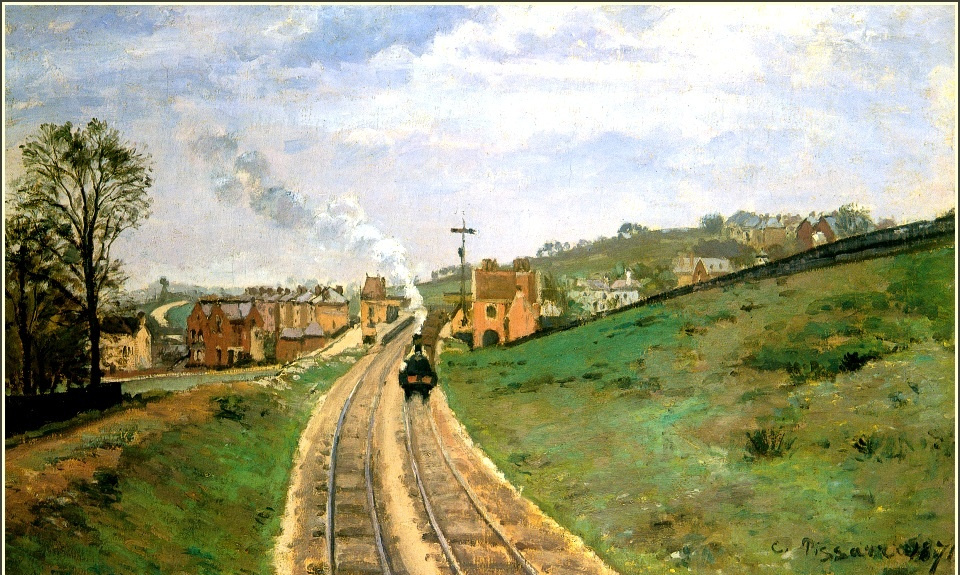
Incidentally, progressive as the Impressionists were, they never accustomed electric lighting. Electricity revealed no secrets or enigmas, information technology did not supplant sunlight, and was not fifty-fifty suitable for lighting a studio. The invention, as information technology turned out, was useless for artists, unlike squealer beard and the railway.
Author: Anna Sidelnikova
Source: https://arthive.com/publications/946~Impressionism_would_have_been_impossible_if_not_these_five_inventions
0 Response to "Ps Art History Brush Is Meant to Do Impressionist Painting"
Postar um comentário